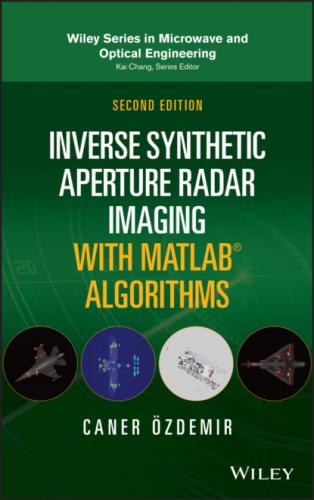1 Basics of Fourier Analysis
1.1 Forward and Inverse Fourier Transform
Fourier transform (FT) is a common and useful mathematical tool that is utilized in innumerous applications in science and technology. FT is quite practical especially for characterizing nonlinear functions in nonlinear systems, analyzing random signals, and solving linear problems. FT is also a very important tool in radar imaging applications as we shall investigate in the forthcoming chapters of this book. Before starting to deal with the FT and inverse Fourier transform (IFT), a brief history of this useful linear operator, and its founders are presented.
1.1.1 Brief History of FT
Jean Baptiste Joseph Fourier, a great mathematician, was born in 1768, Auxerre, France. His special interest in heat conduction led him to describe a mathematical series of sine and cosine terms that could be used to analyze propagation and diffusion of heat in solid bodies. In 1807, he tried to share his innovative ideas with researchers by preparing an essay entitled as On the Propagation of Heat in Solid Bodies. The work was examined by Lagrange, Laplace, Monge, and Lacroix. Lagrange's oppositions caused the rejection of Fourier's paper. This unfortunate decision cost colleagues to wait for 15 more years to meet his remarkable contributions to mathematics, physics, and especially on signal analysis. Finally, his ideas were published thru the book The Analytic Theory of Heat in 1822 (Fourier 1955).
Discrete Fourier transform (DFT) was developed as an effective tool in calculating this transformation. However, computing FT with this tool in the nineteenth century was taking a long time. In 1903, C. Runge has studied on the minimization of the computational time of the transformation operation (Runge 1903). In 1942, Danielson and Lanczos had utilized the symmetry properties of FT to reduce the number of operations in DFT (Danielson and Lanczos 1942). Before the advent of digital computing technologies, James W. Cooley and John W. Tukey developed a fast method to reduce the computation time of DFT operation. In 1965, they published their technique that later on has become famous as the fast Fourier transform (FFT) (Cooley and Tukey 1965).
1.1.2 Forward FT Operation
The FT can be simply defined as a certain linear operator that maps functions or signals defined in one domain to other functions or signals in another domain. The common use of FT in electrical engineering is to transform signals from time domain to frequency domain or vice‐versa. More precisely, forward FT decomposes a signal into a continuous spectrum of its frequency components such that the time signal is transformed to a frequency domain signal. In radar applications, these two opposing domains are usually represented as “spatial‐frequency (or wave‐number)” and “range (distance).” Such use of FT will be often examined and applied throughout this book.
The forward FT of a continuous signal g(t) where −∞ < t < ∞ is described as
where
To appreciate the meaning of FT, the multiplying function exp(−j2πft) and operators (multiplication and integration) on the right of side of Eq. 1.1 should be examined carefully: The term
1.1.3 IFT
This transformation is the inverse operation of the FT. IFT, therefore, synthesizes a frequency‐domain signal from its spectrum of frequency components to its time domain form. The IFT of a continuous signal G(f) where −∞ < f < ∞ is described as
where the IFT operation from frequency domain to time domain is represented by
1.2 FT Rules and Pairs
There are many useful Fourier rules and pairs that can be very helpful when applying the FT or IFT to different real‐world applications. We will briefly revisit them to remind the properties of the FT to the reader. Provided that FT and IFT are defined as in Eqs. 1.1 and 1.2, respectively, FT pair is denoted as
(1.3)
and the corresponding alternative pair is given by
(1.4)
Based on these notations, the properties of FT are listed briefly below.
1.2.1 Linearity
If G(f) and H(f) are the FTs of the time signals g(t) and h(t), respectively, the following equation is valid for the scalars a and b.
(1.5)
Therefore, the FT is a linear operator.
1.2.2 Time Shifting
If the signal is shifted in time with a value of to, then the corresponding frequency signal will have the form of
(1.6)
